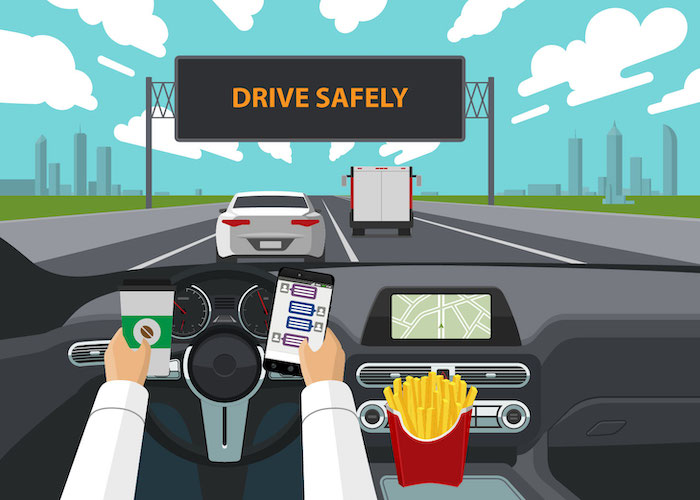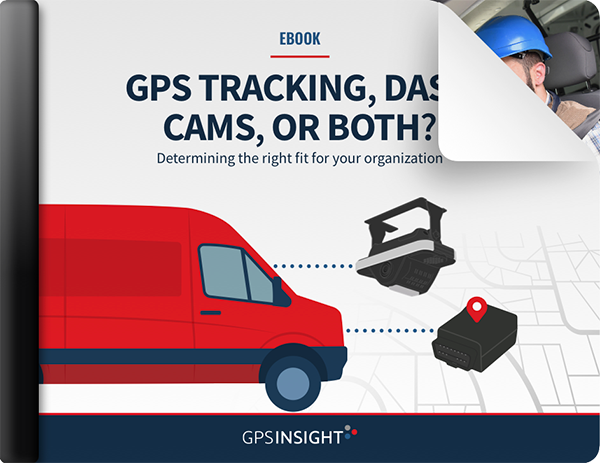
Eliminating Distracted Driving:
How Technology and Coaching Can Improve Fleet Operations
April: the harbinger of spring, renewal, and possibility.
Flowers are blooming, families plan new adventures, and baseball fans across the country await Opening Day, full of hope that this will be their year.
April is also Distracted Driving Awareness Month, a time for all drivers to examine their road habits and take responsibility for their choices while behind the wheel. For fleets, it means reassessing driver safety fundamentals, a re-emphasis on driver coaching, and implementing techniques and technologies that can reduce accidents, improve efficiency, and save money.
Simple Formula: Phone + Driving= More Accidents
Distracted driving—any activity that diverts attention from the task of safe driving—has become a significant danger, with cell phones the leading culprit.
According to the National Highway Transportation Safety Administration (NHTSA), distracted driving claimed 3,142 lives in 2020 and injured more than 420,000 drivers. The AAA Foundation for Traffic Safety found that distracted driving is responsible for nearly 60% of teen crashes, and the National Safety Council reported that cellphone use accounted for 27% of all car accidents. That’s unsurprising because, at 55 MPH, a quick glance to read or send a text diverts attention from the road for five seconds, long enough to travel the length of a football field. In fact, cellphone use behind the wheel increases the risk of a crash by 165%.

Unfortunately, drivers tend to think their behavior on the road isn’t the problem. While 87% of drivers said texting and driving is dangerous, another recent study showed 70% of drivers admitted to using a mobile device while driving in the past 90 days!
Distracted Driving Poses Significant Risks for Fleets
No single industry is more impacted by distracted driving than transportation, and public and private fleet managers must deal with the rising liability and safety risks it brings. According to the Network of Employers for Traffic Safety (NETS), crashes caused by distracted driving cost employers $18.8 billion in 2018.
To begin with, it is not just your drivers you have to worry about. Younger drivers that grew up living on their phones and electronic devices have carried those bad habits to the road and—as noted above—70% of drivers admit to using a mobile device while behind the wheel. One or more of those distracted drivers may be one lane over from your vehicle.

Of course, not all distracted driving incidents lead to an accident, but it can still be costly to your operation. A distracted driver might miss a turn or fall behind schedule, impacting fuel usage or customer service.
Distracted driving impacts your fleet in several ways:
Driver injury and costs: An accident involving your driver could result in medical expenses and workers’ compensation claims.
Vehicle damage: Vehicle damage requires costly repairs or replacement costs and leaves fleet operators with one fewer vehicle on the road.
Damaged reputation: Distracted driving incidents can lead customers or potential customers to believe your company doesn’t pay attention to details or is unreliable.
Increased insurance costs: Even minor accidents can lead to higher insurance premiums. A driver’s furtive glance at a cellphone could lead to significantly higher bills.
Expensive lawsuits: Distracted driving accidents can lead to expensive lawsuits. If someone claims your driver’s actions caused injury or loss, the company can be put at risk.
Tech & Telematics: Just Part of the Solution
Effective fleet management solutions, such as GPS tracking, collect pivotal data and provide real-time alerts of driver behaviors that could be a sign of distracted driving. Smart camera technology can monitor facial and eye movements to determine the use of a phone or other device, or detect driver fatigue, prompting an alert or warning to the manager and driver. Used in combination, these tech solutions establish critical benchmarks to help prevent accidents and reduce litigation and insurance costs by monitoring:
Speed: According to the National Highway Traffic Safety Administration, more than a quarter of all traffic fatalities were related to speeding. Telematics software alerts fleet managers if a driver exceeds a certain speed.
Running Red Lights or Stop Signs: This behavior is a significant source of injuries and can lead to much higher insurance rates if one of your drivers is cited. AI-powered smart cameras inform fleet managers of this dangerous—and potentially expensive—behavior and provide the data to address it with further training.
Following Distance: Tailgating is one of the most dangerous driving habits and a chief cause of accidents. Smart Camera tech determines if your drivers violate the three-second rule and helps correct this behavior.
New Tech + Coaching = A Winning Fleet
The rise of smart data—GPS Tracking and dash cam solutions—in commercial and government fleets has led to the advent of more effective driver coaching programs.
Combining GPS tracking, dash cams, and driver coaching is the perfect solution to prevent accidents rather than just react to them. It’s the best way to reduce insurance costs and losses related to potential lawsuits. Evaluating the insights from these devices and giving drivers fact-based feedback is the key to safer fleets.
5 Keys to Effective Driver Coaching Programs
Getting Started: Select the technology you want to use, create safety policies around it, establish benchmarks, and get driver buy-in for the solutions.
Train Drivers on the Technology: Don’t just install a solution and wait to see how it goes. Train drivers on how the technology works from end to end so they can hit the ground running with positive driving behaviors.
Critical Measurements: Every fleet has its own challenges, but measuring speed, distracted driving, red-light running, and tailgating provides the key insights to determine risky or costly driver behaviors.
Setting Goals for Improvement: Baseline data help set measurable, achievable goals. Reward safe drivers and give lower-performing drivers a chance to improve through modeling.
Make Driver Coaching Part of Your Culture: Once your drivers improve, continue their coaching sessions even if they’re performing well. Be sure to recognize and reward your safest drivers.
Build a Safer Fleet
Through better data and coaching, fleet managers can build a culture of safety that prevents distracted driving and improves performance. Implementing GPS tracking and smart camera technology— paired with consistent driver education and safety coaching—can reduce costs, improve safety, and enhance overall fleet operations.
So here’s the question: Does your organization need GPS tracking, dash cams, or both? We’ve got a guide that can help you make the right decision!






